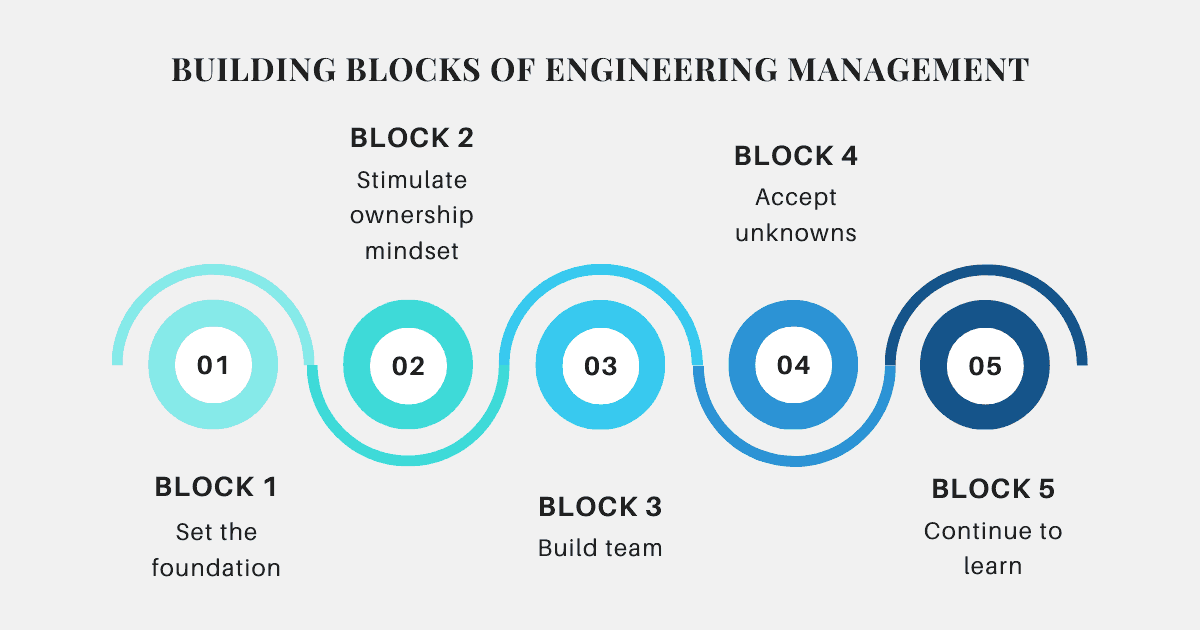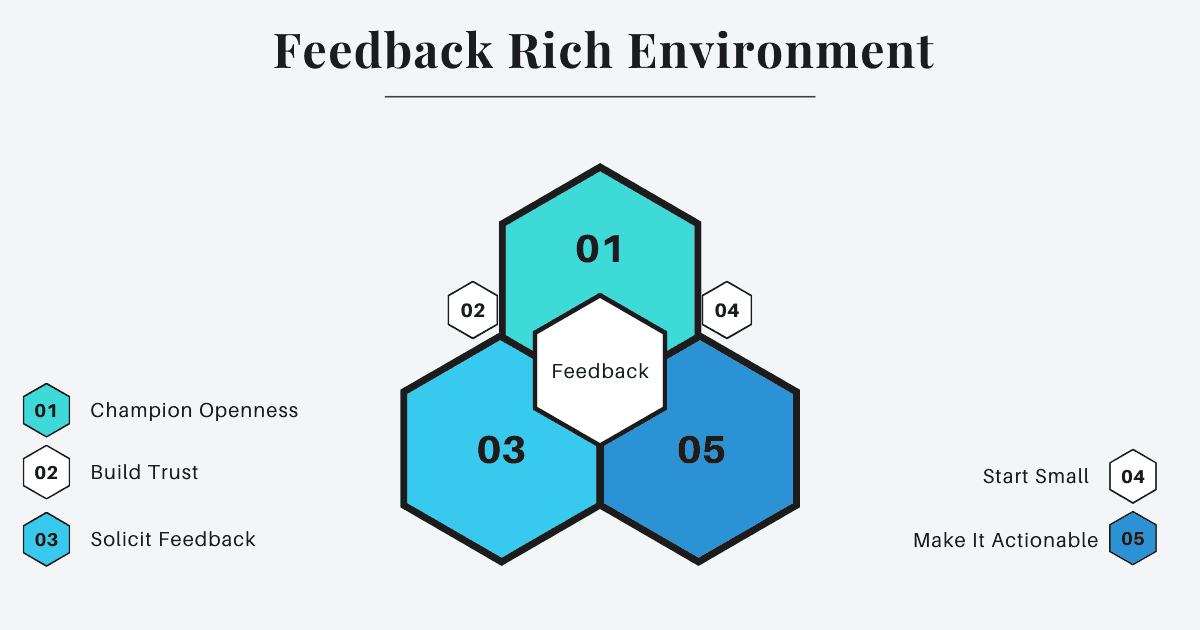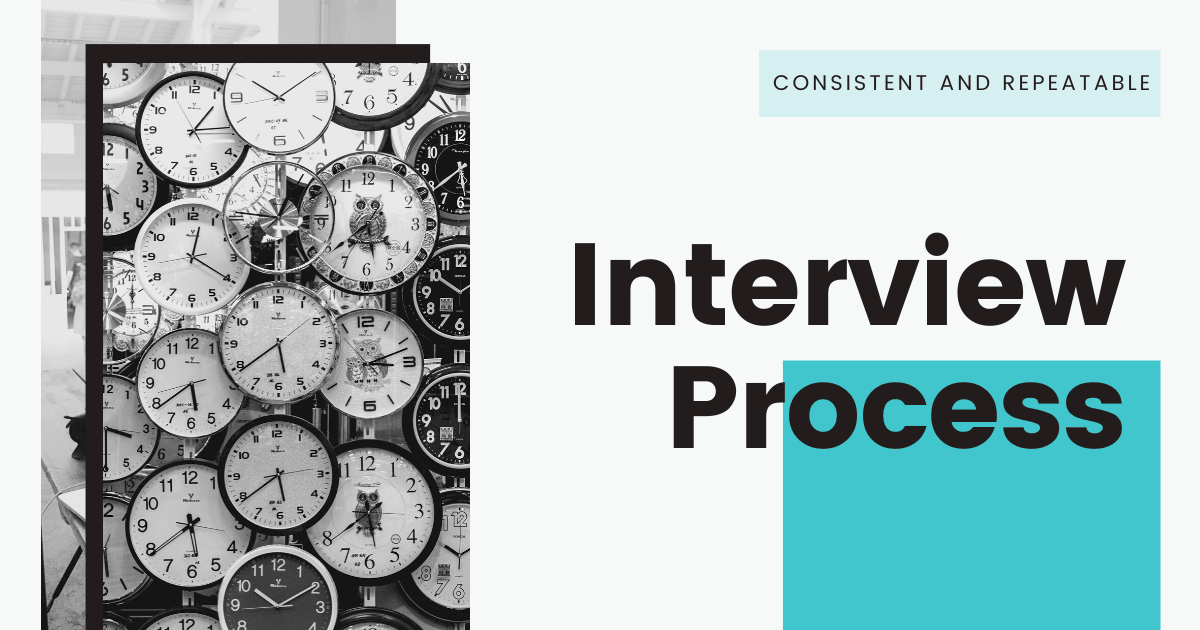Basic Building Blocks To Be A Successful Engineering Manager

As an engineering manager, are you facing an identity shift? Did you think engineering management will be an extension to your previous role, but now seems like a new game with a new set of rules, a job demanding a different set of skills.
You may have been a great tech lead with problem solving attitude and mindset, even responsible for defining and setting aside technical direction for your team while seeking alignment in understanding and executing team’s goals, expert on a large part of your systems, significant partner to product managers in helping shape up the product and prominent in mentoring other engineers to help them grow.
But will these skills that earned you respect and growth as an engineer give you success in your role as an engineering manager?
When I was a tech lead, I did play a role beyond code, but my biggest and most important contribution was still the technical aspect of my work, the technical aptitude and expertise that I brought to the team. I was driven by the impact of my work and got accustomed to seeing direct results of my work as a measure of my success.
Then my whole world turned upside down. I became an engineering manager. My work was no longer quantifiable as it was not immediately visible or concrete in output like that of a tech lead.
The ripple effect of my actions were visible in the form of a delayed feedback loop only if I cared to even notice them.
With time and multiple setbacks along the way, I learnt what brought about the biggest change in my mindset. I realised there’s no magic formula to being successful in my new role as it’s a subjective practice driven by its environment, people and situations therein.
In my journey as an engineering manager, there was no one answer to all the problems I faced at the workplace. My experiences were my own and setting a discipline around things helped me improve as I found my own management style.
What started as a fearful experience soon became rewarding and exciting. I shifted from feeling like an imposter to embracing the role with openness and curiosity, from doing to enabling others and self-achievement to collective team outcome with trust and relationship as the cornerstone of all my work.
In my years of experience working as an engineering manager, I have compiled a list of basic building blocks that enabled this shift by practicing patience and recognising when I needed to change my ways.
These building blocks will serve as the guide to your own unique experience helping you design and develop your own techniques.

People are the most important asset of any organisation, its foundation that makes it strong and ready to face bigger and better challenges.
Without this strong foundation, the organisation will collapse sooner or later. An engineering manager must lay out a solid foundation for their team by adopting and practicing these methods:
Develop a language for your team
Every team must define a set of principles and values that governs how the team will function. It’s the foundation for all actions, behaviour and reasoning within the team.
Engineering managers must facilitate discussions within their team to identify how communication will happen, conflicts will be resolved, what will be the pace of the team, how priorities will be managed, cross team collaboration will be enabled and why they should question the effectiveness of their work, acknowledge mistakes and own them.
Encouraging team members to engage in such a dialogue from the beginning creates an environment where people feel safe to voice their opinion.
These guiding principles also help teams showcase their best work as they spend more time doing and less worrying.
Elevate your EQ and people skills
Every person is unique in their style, personal aspirations and individual likes/dislikes. It’s extremely hard to understand what makes a person tick.
Getting the best out of people requires tapping into this scary zone and connecting with them at an emotional level. Superficial pleasantries can only take us so far. It’s the deep connection that establishes an understanding of the intrinsic values that drive people at work.
It’s not easy but an engineering manager must actively listen and make an effort to understand its people. Take time to establish a relationship before beginning to influence their responsibilities and decision making.
Kim Scott in her book Radical Candor beautifully covers this in a few words,
Make sure that you are seeing each person on your team with fresh eyes everyday. People evolve, and so your relationships must evolve with them. Care personally; don’t put people in boxes and leave them there
Guide, don’t steer
It may be tempting to jump in at the first sign of the problem, spend hours trying to solve it yourself and bask in the glory of its outcome. But the question to ask yourself as an engineering manager is “Is it effective?”
Keeping yourself busy by being in a firefighting mode or solving problems that can be delegated to others can stall the growth of your people and the outcomes they can achieve.
As an engineering manager you must grow your team by showing your trust, challenge them to step up, guide them in the process, but then step away to give them space to figure it out. It requires developing a coaching mindset to ask questions and help them arrive at a solution on their own as opposed to providing a solution.
There will always be extenuating circumstances that will require you to step in, but the key is to start relying on your team to solve problems on their own with your guidance and support.
With a self sufficient team, you will have more time on your hands to invest in areas that truly need your time and energy.
Create feedback regime
Learning and sharing how people in the team are doing, what you can do to help and align their expectations requires giving and seeking feedback.
Impromptu feedback on observations can be helpful in quickly rectifying the situation and solve misunderstandings. But, it’s the feedback with structure and regularity that’s truly effective and has far-reaching effects.
It may take time to sink in and show results, but it will always be far more useful than any other mechanism. For those just getting started, check out my post on First One-on-One Meeting: Build Strong Relationships.
An engineering manager’s role is to act as an advisory and not someone who only pinpoints the problems without helping you arrive at a solution. To create an effective feedback regime:
- Establish mutually agreed upon goals
- Highlight achievements
- Provide well articulated corrective feedback on areas that need improvement
- Block time on calendar
- Provide context on the purpose, frequency and expectation from the meeting
- Practice the message beforehand as it’s not easy but extremely important to get it right
Building Block 2 – Stimulate ownership mindset through empowerment

The intrinsic motivation to think beyond and do your best work comes when there’s an alignment of team goals with its members. Teams who feel vested in the decision and empowered to drive outcome consider the company’s success as their own.
Empowerment doesn’t come from leaving the team to figure things out on their own, it requires channeling the right resources and energy by making them part of the process.
To enable ownership mindset in the team, engineering managers must invest in their people in these 2 areas:
Seek early involvement and partnership on ideas
Over time, I have come to realise that discussions where engineering inputs are incorporated from the beginning tend to reach conclusions much faster with better quality of thought than the ones where they are being brought in at a later stage. By then too many discussions have already happened and there’s a reluctance at all levels to go back to board and start from scratch.
To make people align on purpose and feel like a partner in the overall scheme, give them freedom to express, share ideas and listen to others viewpoints. Learn to capitalise on the free flow and exchange of ideas that brings about a positive stimulation in people. With the business context and the thought process that goes into defining the product, they will find themselves as contributors and not mere executioners of these ideas.
Review, analyse and iterate on ideas that are important for technical sustainability and get buy-in from other counterparts so that there’s an equal level of commitment to platform work as there’s to deliver on product charter.
Give direction and context to build for the future
It’s very easy to accept every incoming request but in doing so an engineering manager must question the effectiveness of their work. Are they building for the future or solving the current? Will this add any value to their customers? How is the work aligned with the goals of the team?
Evaluating every incoming request against a simple framework can help the team focus on the truly important tasks that will make a difference in their work and contribute to organisation’s success.
A team that understands its goals and is empowered to say no to work that does not align with it is unfettered to make the best decision in the interest of the company.
Building Block 3 – Search for right talent and build your own team

An engineering manager is best placed to provide an outlook on their team by identifying the talent gap, determining whether they need generalists or experts and how many people do they need at each level.
A good manager also detects early signs of a possible attrition or the likelihood of their team member moving to another team.
Building the right team must be taken seriously and given more importance than building the right product since there will be no product without people. Hiring the right talent is one of the most difficult and time consuming activities but also the most powerful factor in a team’s success or failure.
Pursue internally before looking outside
If the company encourages internal movement of employees, managers must first look inside for the right talent. People who have already spent time in the organisation will be well versed with its culture and processes and take less time to adjust than people coming from outside.
Create an internal job posting, spend time interviewing internally and then decide.
Develop a hiring plan and own its execution
Once the hiring requirements are laid out and accounted for in the headcount planning, engineering managers must work closely with the recruitment team to define hiring targets and track recruitment metrics as they would do for product/tech metrics.
They must play a key role in successfully driving recruitment strategy for their organisation and their team.
To enable both sides to execute efficiently and make progress on the targets, they must encourage their team members to participate, share feedback and follow the guidelines of the interview process.
Building Block 4 – Accept unknowns and learn to navigate them

It may seem natural to try to manage every piece of information and gather as much data as possible to make a decision, but you can only control things that are in your circle of influence. Your decision is nothing more than an assimilation of these ideas. You don’t know what you don’t know.
Unknowns are a reality of every workplace. A manager who accepts it and then finds creative ways to tackle it can learn to overcome the anxiety and put their time and energy into building for the future.
Be proactive and review new discoveries during the course of the project
As unknowns start to take shape, managers who act on the first sign of it are able to derive a much better outcome for their team than those who wait for these unknowns to disappear.
It may be a gap in requirement, failure in understanding the limitations of a certain technology, collaboration issues across teams or even wrong estimation to complete a certain project.
Being proactive in trying to understand the unknown and solving for it will lead to minimal impact and have a much better likelihood of keeping the team focused on its goals.
Too much delay and the situation may be irreparable leading to a complete failure.
Seek alignment by pushing for clarity across all functions
Things that seem obvious to us and all the assumptions that we make can lead to disagreements and disappointments later as we learn about the gap in our understanding and others expectations.
A large part of it can be avoided through transparency and aiming for clarity across all functions.
Agree on simple processes where people from different functions can come together on a regular basis to share their updates, clarify assumptions, review plans, highlight risks, walk through the contingency plan and other important information that the group must know.
Keeping all stakeholders aligned throughout the product development lifecycle is crucial to the success of any project.
Take hard decisions and be willing to face the consequence
Whether it’s pushing for realistic deadlines or weighing in on the benefit of some tech improvement as opposed to a new feature, devising solutions that benefit the team as well as business (win-win) is critical to long term success of any organisation.
Maintain the right balance of technical improvements and product features by managing scope and taking hard decisions to keep the team focused and aligned on its goals.
It may upset some people in the short term. Your job as an engineering manager is not to please people, but do what’s right for the organisation and your team.
Building Block 5 – Continue to learn

As a manager, time and energy is your most precious resource, learn to use it wisely. Stop doing inconsequential work and spend time planning for the future. Read my post on Eisenhower Matrix: How to Prioritise and Master Productivity.
Do not wait to be trained by your company, take charge of your own learning by reading books, articles and listening to podcasts.
Spend time learning the fundamentals of the skills required in your role – communication, collaboration, conflict management, coaching and delegation. Practice what you learnt by applying it and finding out for yourself what works for you and your team.
You will make mistakes as a manager, fail multiple times, but it’s only practice that will make you successful in this role.
I hope I leave you with some thoughts on how to be a successful engineering manager. I would love to hear your stories and learnings along the way, write to me or leave your comments below.





























